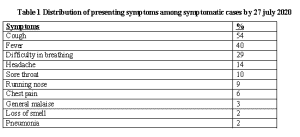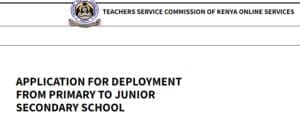Here is the Covid-19 training manual for teachers to safely handle and inform learners.
CORONA VIRUS DISEASE TRAINING MANUAL FOR TEACHERS
WHAT IS CORONA VIRUS?
There is a large family of corona viruses that have emerged and caused illness ranging from the common cold to more severe and infectious respiratory diseases. For instance in:
- ❖ 2002- Severe acute respiratory syndrome corona virus (SARS CoV) –the first human infection was in Guangdong in China and 8000 cases were confirmed in 26 countries globally.
- ❖ 2012-Middle East Respiratory Syndrome (MERS)-The epidemic was in Saudi Arabia. The fatality rate was 30%-40%. Camels were natural reservoirs of MERS CoV.
FACTORS CONTRIBUTE TO EMERGING AND RE-EMERGING OF INFECTIOUS DISEASES.
- Ecological changes and agriculture development- Global warming is expected to increase up to 5.8% by 2100
- Change in human demographics and behavior – elderly, HIV/AIDS/, drug abuse
- International movement of human beings and animals
- Technology and industrialization- laboratory accidents
- Bioterrorism
ABOUT COVID -19.
Covid-19 is a respiratory disease caused by SARS-Cov-2 or COVID -19 Virus. It is an airborne disease. The first confirmed case of COVID -19 was reported in Wuhan City, Huabei Province in China in 2019. The incubation period for COVID-19 is between 2-14 days.
SIGNS AND SYMPTOMS EXHIBITED BY COVID-19 PATIENTS
- ❖ Fever
- ❖ Cough
- ❖ Shortness of breath
- ❖ Headache
In Kenya out of the 17535 confirmed cases by July 27 2020, 1451 (8 percent) were symptomatic and 16084 case (92%) were asymptomatic.
Table 1 Distribution of presenting symptoms among symptomatic cases by 27 july 2020

CLINICAL MANAGEMENT FOR COVID-19 PATIENTS
There is no specific treatment for COVID-19 therefore patients are given supportive care to relieve symptoms. There is o vaccine that has been approved, so far.
Mode of transmission for the corona virus
The virus is transmitted through: –
- Respiratory droplet particles
- Close physical contact with infected persons
- Being in contact with contaminated surfaces- the virus can remain in surfaces between 3 hours and 9 days.
Read also; TSC guidelines on Community Based Learning, CBL.
Prevention and control measures for COVID -19
1. Maintaining personal health hygiene practices
a) Regular Hand washing / sanitizing
The virus can be transmitted by touching contaminated surfaces and materials then touching our mouth, nose, and eyes. Therefore, by washing hands with running water and a soap help to destroy viral cell membrane and expose the constituents of the cell membrane to environment.
Alcohol based sanitizer (70% alcohol) also denature and inactivate viral replication, inhibit protein synthesis, and decrease production of adenosine triphosphate (ATP).
b) Respiratory health hygiene practices
Always cover your mouth or nose with reflexed elbow or disposable paper towel when coughing or sneezing to prevent spreading of droplets to surfaces.
2. Maintaining social distance
Social distance is keeping a space of 1.5m or 5ft between yourself and other people. It is now mandatory to: –
i. Avoid handshakes
ii. Avoid social gathering
iii. Avoid any other activity that promotes close physical contact such as hugs, kissing etc
3. Proper use of face mask
COVID-19 is spread by inhaling respiratory droplet particles when talking, laughing, sneezing, singing or coughing. Proper wearing of face masks i.e. covering both mouth and nose help to stop droplets from leaving one’s body and reaching the air or surfaces.
4. Adequate ventilation
Ventilation is circulation of air.
Adequate ventilation allows proper circulation of the air therefore all rooms should be well ventilated by opening windows and doors.
5. Avoid sharing of materials such as pens
COVID-19 virus can remain on surfaces between up to 9 days therefore avoid sharing of items.
6. Regular cleaning and disinfection
Regular cleaning of floor, tables and desks with a standard detergent should be done.
Areas without electronic can be disinfected with chlorine 0.05% concentration
Ares with electronic sensitive with water can be disinfected with alcohol based spirit or swabs
Utensils in the dining hall and kitchen should be cleaned with a running water and soap then disinfected with chlorine for 15 minutes and rinsed with running
7. Regular thermal screening
One of the most common signs of COVID -19 is fever therefore regular screening of staff members, students, and visitors will help to monitor their body temperature. Any person with temperature above 37.50c will be considered a suspect of COVID-19.
8. PROTECTING THE VULNERABLE GROUP: –
Might have compromised immune system like:-
- Elderly
- Pregnant and lactating mothers
- Children under five years
- People who have existing chronic medical conditions such as diabetes, cardiovascular diseases, asthma, cancer, kidney disease, severe obesity
The vulnerable group may develop serious complications such: –
- • Pneumonia and trouble breathing
- • Organ failure in several organs
- • Heart problems
- • acute respiratory distress syndrome
- • Blood clots
- • Acute kidney injury
- • Additional viral and bacterial infections
9. Registration
Registration of staff members, students, and visitors will ease contact tracing.






